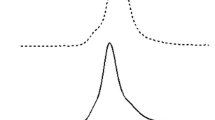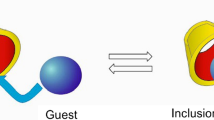Abstract
Three alkylcarbonates of γ-cyclodextrin, i.e. hexyl, octyl and dodecylcarbonate, were synthesized and characterized, with the goal of formulating solid nanoparticles. The series of alkylcarbonates showed amphiphilic properties and were capable of forming micelles and nanoparticles. Blank and drug-loaded alkylcarbonate nanoparticles were prepared with each alkylcarbonate, using the solvent injection technique. Progesterone was chosen as model drug. The sizes of both unloaded and loaded nanoparticles were in the 80–200 nm range, with narrow size distribution and spherical shape, as shown by TEM analysis.
The zeta potentials of unloaded nanoparticles were in the −20 to −24.0 mV range, and were slightly decreased in loaded nanoparticles. Drug-loading capacity was good; DSC analysis did not detect the progesterone melting peak, indicating the drug had interacted with the cyclodextrin alkylcarbonates. In vitro release kinetics of progesterone from the three types of nanoparticles were slow. These results indicate that γ-CD alkylcarbonate nanoparticles might be used as prolonged drug delivery system.
Similar content being viewed by others
Explore related subjects
Discover the latest articles, news and stories from top researchers in related subjects.Avoid common mistakes on your manuscript.
Introduction
Amphiphilic cyclodextrins are synthetic derivatives of natural cyclodextrins, obtained by modifying the primary or secondary face with linear or branched aliphatic chains of varying lengths linked with different chemical bonds (ester, ether or amide). These derivatives, partially losing the surface hydrophilicity of cyclodextrins and showing amphiphilic properties, are of interest for pharmaceutical applications in view of their ability to self-organize in water to form micelles and nano-aggregates, which can be used as drug carriers. Amphiphilic cyclodextrins have recently been used to prepare nanoparticles and nanocapsules, without surfactants, and have shown high drug-loading capacity [1–3]. Nanoparticles of amphiphilic β-cyclodextrin (β-CD), modified on the secondary face with 6C aliphatic esters, had an average diameter of 250–300 nm and could be loaded with tamoxifene citrate [4]. Interesting amphiphilic β-CDs have also been produced by grafting aliphatic chains of different lengths (C6 linear and branched; C14 linear) and have been used to prepare stable nanocapsules [5].
In previous work we synthesized amphiphilic γ-cyclodextrin (γ-CD) derivatives by introducing lipophilic groups at the primary hydroxyl face, i.e. alkylcarbonates of different alkyl chain lengths, with a mean degree of substitution = 3. Alkylcarbonate γ-cyclodextrins are non-hemolytic, fairly stable at physiological pH and possess the capacity to form inclusion complexes with drugs [6, 7]. The present study investigated the ability of a series of alkylcarbonates of γ-CD (i.e. hexyl, octyl and dodecyl) to form solid nanoparticles. Blank and loaded alkylcarbonate nanoparticles were prepared and characterized in vitro; progesterone was chosen as model drug, and pre-loaded alkylcarbonates were used to prepare loaded nanoparticles.
Experimental
Materials
γ-Cyclodextrin (γ-CD) was a kind gift from Wacker Chemie (Münich, Germany); progesterone was from Fluka (Buchs, CH). All reagents (ACS grade) were from Sigma (USA) and were used without further purification. HPLC solvents were from Carlo Erba (Milan, Italy).
The alkylcarbonates were prepared as described elsewhere [6] with an average degree of substitution (DS) of 3.
Surface tension determination
The surface tensions of the three alkylcarbonates were measured using a K10 tensiomter (Kruss) at 25°C and with deionized water at a surface tension of 69 mNm−1; the critical micelle concentration (cmc) values were also determined. Each alkylcarbonate was analyzed in triplicate.
Preparation and characterization of alkyl carbonate complexes
The progesterone inclusion complexes were obtained by adding a suitable amount of drug to an alkylcarbonate water/ethanol solution (70:30 v/v). After 48 h stirring, the mixture was centrifuged and the surnatant dried to obtain a powder. The alkylcarbonate drug complexes were characterized by Differential Scanning Calorimetry (DSC). The complexes were used to prepare the nanoparticles.
Preparation of γ-CD alkylcarbonate nanoparticles
Blank and drug-loaded nanoparticles were prepared using the hexyl-, octyl- and dodecyl carbonates (C6, C8, C12) of γ-cyclodextrin, as such or pre-loaded as complexes. Both types of nanoparticles were obtained by the solvent injection technique. Briefly amphiphilic γ-CDs (20 mg) were dissolved in ethanol (3 ml), the solution was added drop-wise to 15 ml water under stirring and the γ-CD alkylcarbonate nanoparticles formed. The aqueous dispersion was stirred for 2 h and then washed three times by diaultrafiltration using a TCF2 Amicon with a Diaflo YM 100 membrane, cut off 100,000 Da, to eliminate the solvent. An aliquot of the dispersion was then freeze-dried using a Modulyo Instrument (Edwards, Crawley, UK), leaving the nanoparticles as powder.
Characterization of γ-CD alkylcarbonate nanoparticles
The average diameters and polydispersity indices of the three types of nanoparticles (named C6, C8 and C12) were determined by Photon Correlation Spectroscopy using a 90 PLUS instrument (Brookhaven, NY, USA) at a fixed angle of 90° and a temperature of 25°C. Nanoparticle dispersions in water were diluted with filtered water before analysis; nanoparticle morphology was evaluated by Transmission Electron Microscopy (TEM) using a Philips CM10 (Eindoven, NL) instrument. The zeta potentials of the nanoparticle dispersions were measured by Laser Doppler Anemometry, using a 90 PLUS instrument (Brookhaven, NY, USA), before and after freeze-drying; nanoparticle samples were diluted with KCl 0.1 before analysis.
The percentage of drug loading was determined by a reverse-phase HPLC method. Briefly, a Perkin Elmer Binary LC pump 250 Chromatograph equipped with an ultraviolet detector LC 95 Perkin Elmer) and a 5 μm C-18 column (250 × 4.6 mm, Waters) were used. The mobile phase was a mixture of 60% water and 40% acetonitrile, with a flow rate of 1 ml min−1. Absorbance was monitored with a UV detector at 246 nm. Before analysis a weighed amount of freeze-dried progesterone-loaded nanoparticles ( about 1 mg) were diluted in 20 ml of ethanol and then injected.
Thermal analysis of progesterone-loaded nanoparticles
Differential Scanning Calorimetry (DSC) was carried out on progesterone and drug-loaded nanoparticles using a DCS 7 system (Perkin Elmer) in the temperature range 25–200°C at a heating rate of 10°C/min. The instrument was calibrated with indium for melting point and heat of fusion. Standard aluminum sample pans (Perkin–Elmer) were used; the reference standard was an empty pan. Analyses were performed under nitrogen purge; triple runs were carried out on each sample.
In vitro release study
In vitro progesterone release experiments were performed by the dialysis technique using a membrane with 12,000 Da cut-off. A weighed amount of freeze-dried loaded nanoparticles was dispersed in phosphate buffer pH 7.4 and placed in the donor compartment. The receiving phase was filled with a solution of 1% Tween 80 in phosphate buffer at pH 7.4 to obtain sink conditions; each release experiment lasted 2 h. At fixed times, the receiving buffer solution was withdrawn and replaced with fresh buffer solution. The withdrawn solutions were then analyzed by HPLC using the method described above to determine the progesterone concentrations.
Results and discussion
The three alkyl carbonates decreased the surface tension of water to about 35 mNm−1, as reported in Fig. 1 for the hexylcarbonate. The cmc values were in the 15–30 × 10−5 M range, and decreased as the alkyl chain length increased (Table 1).
These results show that hexyl-, octyl- and dodecylcarbonates of γ-CD are amphiphilic molecules with different interfacial characteristics and a capability to self-aggregate in water.
Progesterone–alkylcarbonate complexes were used to prepare the drug-loaded nanoparticles. Hexyl and octyl carbonates are able to form progesterone inclusion complexes with high apparent stability constants, as reported elsewhere [7]. In this study, the complex of progesterone with dodecylcarbonate was also prepared. DSC analysis of this complex confirmed progesterone’s interaction with the three alkylcarbonates (data not shown).
The three alkylcarbonates formed solid colloidal nanoparticles without the addition of surfactants, either as such or loaded with progesterone. The size of blank γ-CD alkylcarbonate nanoparticles varied from 80 nm to about 200 nm depending on the alkylcarbonate chain length, with a narrow size distribution (Table 2). The increase in nanoparticle diameter with alkyl chain length might be ascribed to the steric hindrance of the aliphatic chains: probably different self-alignment of the alkyl chains could form larger nanoparticles. Moreover the different alkylcarbonate solubility could play a role in the nanoprecipitation process which happen during the solvent injection.
The three progesterone-loaded nanoparticles showed little size increase vs. blank nanoparticles (Table 2); thus the presence of the drug affected in part the packing of the alkylcarbonates during nanoparticle formation. TEM analysis showed the spherical shape of the three types of nanoparticles, both blank and drug-loaded, and confirmed their sizes and distribution (Fig. 2).
The alkylcarbonate nanoparticle surfaces were negatively charged, as shown by the zeta potential values reported in Table 2. The high negative charge of the three types of cyclodextrin nanoparticles indicates the presence of the hydroxyl groups of γ-CD oriented toward the water, with surface hydrophilicity, and with the alkyl chains in the inner part of the alkylcarbonate nanoparticles.
All the progesterone-loaded nanoparticles showed a slight decrease in zeta potential. The dodecylcarbonate nanoparticles had a more marked difference than the other two types of nanoparticles. This difference might be related to the different effect of the alkyl chain length. The derivatization of cyclodextrins may also distort the cavity, so modifying the complexation with the guest molecules and inducing interaction with the alkyl chain around the torus as previously reported [7]. Consequently the surface charge could be influenced.
Drug loading was about 7% for the hexyl and octylcarbonates, while it was about 6% for the dodecyl derivative (Table 2).
DSC analysis of the drug-loaded nanoparticles did not show the endothermic peak due to the melting of progesterone, confirming that the drug had interacted with the alkylcarbonate γ-CD cavity, also after the preparative processes (Fig. 3). The disappearance of the melting peak suggested that the drug is molecularly dispersed or in an amorphous phase inside the alkylcarbonate nanoparticles.
The in vitro release profiles of progesterone from the three types of nanoparticles showed slow drug release rates, which reached 7.1% for the hexylcarbonate nanoparticles after 2 h; no burst effect being observed for any of the alkylcarbonates (Fig. 4).
The retarding effect might confirm the inclusion of progesterone in the cyclodextrin cavities and the capability of the alkylcarbonates to self-aggregate, forming nanoparticles, probably favoring further entrapment of the drug.
Conclusion
The three types of alkylcarbonates possess the capability to nano-associate, forming spherical nanoparticles in the colloidal size range, without the addition of surfactants. The progesterone loaded nanoparticles maintain small sizes, spherical shape and negative surface charges.
In vitro progesterone release is prolonged, suggesting that this kind of γ-CD alkylcarbonate nanoparticles might be used as sustained drug delivery system.
References
Duchêne, D., Ponchel, G., Wouessidjewe, D.: Cyclodextrins in targeting application to nanoparticles. Adv. Drug Deliv. Rev. 36, 29–40 (1999)
Gèze, A., Aous, S., Bausanne, I., Putaux, J.L., Defaye, J., Wouessidjewe, D.: Influence of chemical structure of amphiphilic β-ciclodextrins on their ability to form stable nanopartides. Int. J. Pharm. 242, 301–305 (2002)
Dubes, A., Parrot-Lopez, H., Abdelwahed, W., Dagobert, G., Fessi, H., Shahgaldian, P., Coleman, A.W.: Scanning electron microscopy and atomic force microscopy imaging of solid lipid nanoparticles derived from amphiphilc cyclodextrins. Eur. J. Pharm. Biopharm. 55, 279–282 (2003)
Memişoglu-Bilensoy, E., Vural, I., Bochot, A., Renoir, J.M., Duchêne, D., Hincal, A.A.: Tamoxifen citrte loaded amphiphilic β-cyclodextrin nanoparticles: in vitro characterization and cytotoxicity. J. Controlled Rel. 104, 489–496 (2005)
Memişoglu, E., Bochot, A., Sen, M., Charon, D., Duchêne, D., Hincal, A.A.: Amphiphilic β-cyclodextrins modified on primary face: synthesis, characterization and evaluation of their potential as novel excipients in the preparation of nanocapsules. J. Pharm. Sci. 97, 1214–1220 (2002)
Trotta, F., Cavalli, R., Trotta, M.: Investigation of hetmolitie and complexation properties of γ-cyclodextrin carbonate derivatives. J. Incl. Phenomena Macroc. Chem. 44, 345–346 (2002)
Cavalli, R., Trotta, F., Trotta, M., Pastero, L., Aquilano, D.: Effect of Alkyl Carbonates of γ-cyclodextrins with different chain lengths on drug complexation and release characteristics. Int. J. Pharm. (submitted for publication)
Author information
Authors and Affiliations
Corresponding author
Rights and permissions
About this article
Cite this article
Cavalli, R., Trotta, F., Carlotti, M.E. et al. Nanoparticles derived from amphiphilic γ-cyclodextrins. J Incl Phenom Macrocycl Chem 57, 657–661 (2007). https://doi.org/10.1007/s10847-006-9269-9
Received:
Accepted:
Published:
Issue Date:
DOI: https://doi.org/10.1007/s10847-006-9269-9








